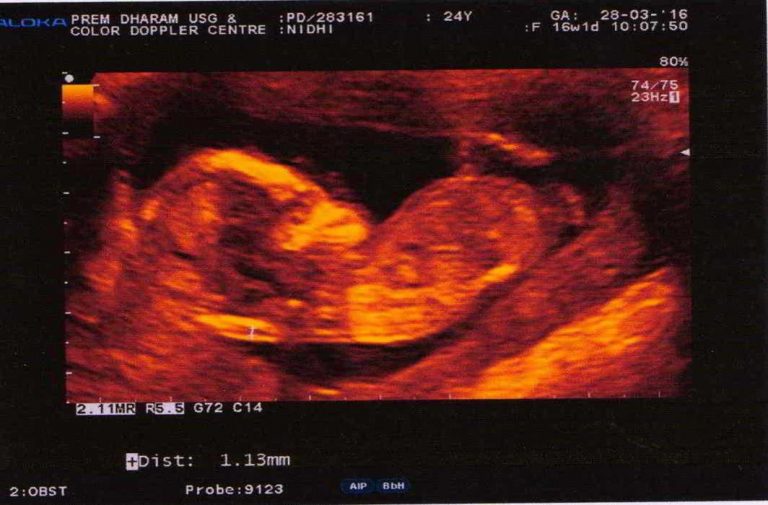
The Supreme Court has said that the Prohibition of Sex Selection Act 1994 is a social welfare legislation, conceived in light of the skewed sexratio of India and dilution of the provisions of the Act or the Rules would only defeat its purpose which is to prevent female foeticide, and relegate the right to life of the girl child under Article 21 of the Constitution, to a mere formality.
While dismissing a petition filed in by the Federation of Obstetrics and Gynecological Societies of India (FOGSI), the apex court upheld the constitutional validity of Section 23(1) and Section 23(2) of the Pre-conception and Pre-natal Diagnostic Techniques (Prohibition of Sex Selection) Act, 1994. The Judgment was delivered by a bench of Justices Arun Mishra and Vineet Saran.
FOGSI filed the petition in 2017 where it contended that that even though the Act was enacted to prevent the determination of the sex of the foetus in the womb to prohibit the heinous crime of female foeticide, it has failed to be implemented in its true letter and spirit. It further argued that the Act fails to distinguish between the criminal offences and the anomalies in paperwork like incomplete ‘F’ Forms, clerical mistakes such as writing NA or incomplete address, no mentioning of the date, objectionable pictures of Radha Krishna in sonography room, faded notice board, striking out details in the Form ‘F’ etc. They contended that the members of the Petitioner society are being wrongly accused under the provisions of the act even on account of clerical mistakes or unintentional mistakes in the record keeping. The ambiguous wordings of the act are such that the members of the Petitioner society are liable to be charged for the heinous crime of the female foeticide and sex determination and that the members have undergone criminal prosecution.
Section 23(2) empowers the state medical council to suspend the registration of any doctor indefinitely who is reported by the appropriate authority for necessary action. The Petitioner contended that this provision is ultra vires the constitution as it assumes the guilt of the doctor even before any trial by the competent court. It further contended that the act fails to distinguish between the absence of intention and minor clerical errors. The form F does not fulfill the objective of what it was enacted for and any minor clerical mistake in the form F may result in conviction of the doctor.
The Union of India on the other hand contended that the Petitioner is trying to mislead the court in the garb of social cause and that a criminal activity cannot be declared to be ultra vires the constitution. The Union submitted that the intention of the legislation while enacting this act was to uphold the rights of Woman and children and to completely abolish the practice of pre natal test of determination of the gender of the foetus which subsequently leads to female feoticide in majority cases. It was contended by the government that the male-female ratio of the country is not equal and thus the centre is duty bound to protect the welfare of the children. Ms. Pinky Anand, Additional Solicitor General also contended that there is an alarming decline in the child sex ratio in the country. In several districts of the country the ratio is less than 800 girls for 1000 boys.
The Centre further said that the “anomalies in paper-work” is actually a necessary provision in the Act to track the record and for proper implementation of the Act and the punishment for non compliance of the same cannot be treated as an infirmity in the Act. The Petitioner then went on to highlight the purpose of Form ‘F’. Form ‘F’ is filled up to maintain personal and medical record of the patient visiting the Pre-Natal Diagnostic Clinic to avail the services and confirmation regarding the consent of the patient/pregnant woman with regard to the prohibition of communication of the sex of foetus so as to avoid abuse of the technology. Section 4(3) of the Act requires every Genetic Counselling Centre/Genetic Clinic to fill Form ‘F’. The form ‘F’ gives the insight into the reasons for conducting ultrasonography and incomplete Form ‘F’ raises presumption of doubt against the medical practitioner and in the absence of Form ‘F’, the Appropriate Authority will have no means to supervise the usage of the ultrasonography machine and shall not be able to regulate the use of the technique. The nonmaintenance of records is not merely a technical or procedural lapse in the context of sex determination, it is the most significant piece of evidence for identifying the accused.
The Supreme Court also went on to observe that the concern of the decline of female ratio is not only a matter of concern for India but also for the rest of the world. The United Nations General Assembly had adopted Resolution No.52/106 on 11.2.1998 expressing concern about prenatal sex selection, female infanticide and female genital mutilation. The said Resolution also urged all States to enact and enforce legislation protecting girls from all forms of violence, including female infanticide and prenatal sex selection. The Union of India also furnished the date of the sex ratio of the country through various year. The Supreme Court pointed to the sharp decline in the sex ratio in India which went down from 972 females as against 1000 males were recorded at the turn of the last century to 941 in 1961, 930 ten years later. Though it recorded a minor increase in the next decade, by 1991 it had again slipped to 927. After the implementation of the Act, the improve has been noticeable, going up to 933 in 2001 and 943 in 2011.
—Saumya Sinha
You might also be interested in:

